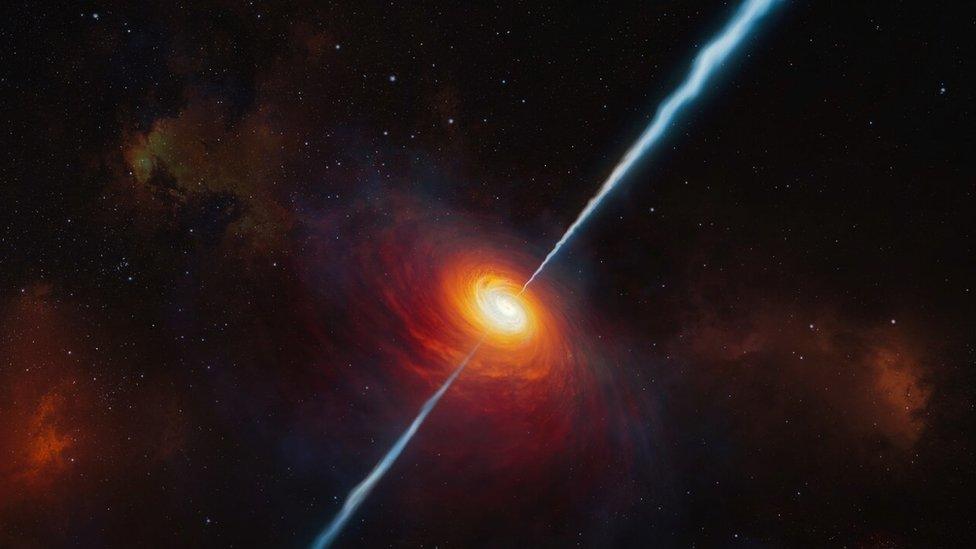Scientists discover space blast that took 13 billion years to reach Earth
- Published
- comments

Scientists have discovered the most distant radio blast from a space quasar ever!
The radio blast travelled more than 13 billion light years across the universe before they being captured by astronomers here on Earth.
They came from a quasar, which are among the brightest objects in the universe.
This new radio blast is important because it is the first time that signals have been able to be detected from such a distant object.
Black holes are pretty epic. They're formed when a dying star collapses inward under the pressure of its own weight. This leads to something called a supernova, a star's extremely powerful explosion.
Black holes are places in space where the pull of gravity is so strong that even light can't escape it! This is what makes them invisible.
Quasars are found at the centre of some galaxies and are powered by supermassive black holes.
When the surrounding gas is eaten by the black hole, it throws out energy that travels across the universe and can be studied by scientists.
But only a small number of quasars are "radio-loud", or have jets that throw out radio signals, so discoveries like this are big news.
They help scientists to continue learning about the first billion years of the universe.
Powerful telescopes, such as the VLT in Chile, help astronomers study the universe from Earth
The quasar, named P172+18, is powered by a supermassive black hole, which is about 300 million times more massive than our Sun.
"I find it very exciting to discover 'new' black holes for the first time, and to provide one more building block to understand the primordial Universe, where we come from, and ultimately ourselves," said Chiara Mazzucchelli from the European Southern Observatory, who was one of the scientists who found the object.
Scientists were able to inspect the quasar in detail after seeing it using the the Magellan Telescope at Las Campanas Observatory in Chile. Further research was done using other equipment including the ESO's Very Large Telescope.
"This discovery makes me optimistic and I believe - and hope - that the distance record will be broken soon," said Eduardo Ba帽ados of the Max Planck Institute for Astronomy in Germany, who co-led the research.
- Published16 February 2021
- Published14 October 2023
- Published6 January 2021
